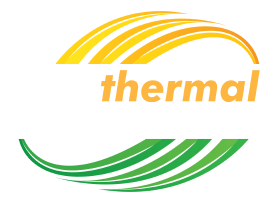Geothermal Installation Process
Renewable Energy You Already Own. And It’s Right In Your Backyard.
1
System Design & Loop Size
As a qualified geothermal company, we expertly design your geothermal unit with these results in the forefront of our mind.” First, we design the geothermal system and size the loop for your unique home. The size of your home will dictate the size of the equipment, and the age and construction of your home will dictate the quantity of loop. Soil type and climate conditions also affect the loop field size. Dense soils such as rock and clay hold and transfer more heat. Sandy soils absorb less heat. As a general rule of thumb, the drier the ground the larger the loop field required. Sizing a geothermal heat pump is an intricate process done by our qualified installers. Concentrating only on the inside equipment is a mistake commonly made by many contractors. We start by analyzing the heating and cooling demands of your home. From there we will be able to calculate the right size geothermal heat pump. Systems are generally sized in tons. An average home might be 3 tons, a larger home might be 6 tons. Never choose on cost alone. An undersized system will strain to reach your desired heating and cooling needs because the heat pump will try to make up for its size by using more electricity, resulting in higher utility bills. An oversized system also comes with problems; it can produce too much airflow resulting in short run times. This means the system cycles on and off frequently, reducing efficiency and increasing utility bills. An oversized system also decreases the comfort level in the home. Short run times during the summer will cool the room but fail to remove humidity, leaving your home clammy and sticky. Oversized equipment can also overshoot the thermostat setting causing a home to overheat in the winter and become an icebox in the summer.
2
Outdoor Drilling & Loop Feild Installation
Our drilling and loop installation can be done on new construction or existing homes. Loop fields can be installed vertically or horizontally. What’s the difference? It’s only in the way the pipe is inserted in the ground, no orientation is “better” then another as they all work effectively. Your ground loop orientation will depend on available space, ground conditions and surrounding environment.
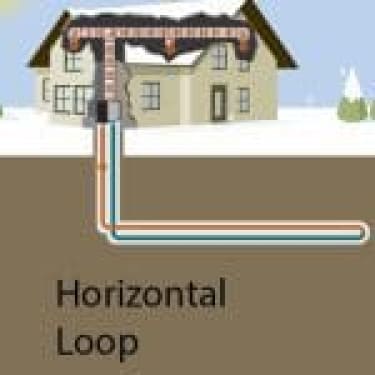
Installation
Directional Loop Field
The directional drilled loop field is our most popular method. It is neat, clean and offers the best thermal transfer as the pipes are in direct contact with virgin-native soils. We are able to deploy this method on almost any property, even under an acre.
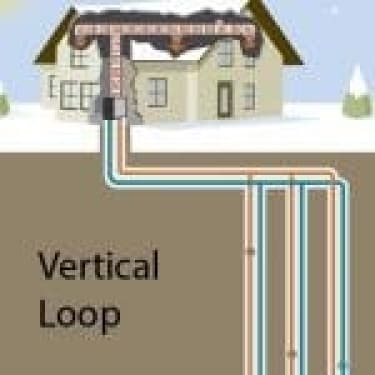
Installation
Vertical Loop Field
A vertical loop field is the most common installation process for a geothermal heat pump that is installed on smaller properties. During a vertical loop field installation a series of holes are drilled, each between 150-200 feet deep. Then, piping is fed down these holes and connected in a loop pattern. Once all of the pipes are connected together outside of the home they are threaded into your home and attached to the heat pump unit.
Low Impact Drilling Method: Our neat, clean, low impact drilling method is patent pending. If you have a small lot, extensive plantings, mature trees, new driveway, above ground & underground obstructions, irrigation and landscape lighting. . . DON’T WORRY! Our unique patented drilling method, greatly reduces the impact on your property, construction time and unsightly excavations. Our drilling method provides superior thermal-conductivity over any other installation method without the damage to your trees and property. The loop field will last a lifetime, has no moving parts and requires no maintenance. At Geothermal Professionals we are fully equipped and able to handle any drilling job.
3
Indoor Installation & Calibration
RETROFIT INSTALLATION -We will remove and dispose of your existing system, provide drilling, tie -in, pumps, the geothermal heat pump, electrical, ducting, thermostat, flush fill and calibrate in about two and a half weeks. The geothermal heat pump itself is about the size of a conventional furnace, very quiet and will last twice as long.
EXISTING SYSTEM REPLACEMENT – If we are replacing an existing system, the old furnace and air conditioner will be removed, the new unit will be put in place on the same day for temporary heat (if winter) and attached to the existing duct work. Some duct work modification will be needed. A replacement system consists of new duct work transition fittings, new flow center and pumps, new condensate lines, new pad, new auxiliary heat module, new thermostatic controls and a flush with calibration for perfect performance. Normally we quote one week for the installation time.
NEW CONSTRUCTION – For new construction, we provide custom sheet metal design and fabrication, drilling and loop field installation. We will install the system in the appropriate location and connect it to duct work. Once the unit is in place and the loop field is finished the two are joined, filled, and thoroughly tested.
The installation of your geothermal system is provided by a team of year round/permanently employed gentlemen . All new installations are under the direction of Owner, Dan Fant. Dan is a licensed installer with comprehensive training and over 15 years of experience installing and servicing geothermal systems.
BRAND EQUIPMENT – We specialize in installing Enertech Global equipment; in particular, the Hydron Module Revolution2 brand. Hydron Module geothermal heat pumps are hand assembled right here in the United States and are the only 5 star rated geothermal system on the market today. The Hydron Module product is the only geothermal system in the world that is built with an all aluminum micro channel heat exchanger. The Hydron Module is the world’s best manufacturer of residential ENERGY STAR® qualified geothermal heat pumps.
Contact Information
Get in Touch
We Service All makes and models of geothermal systems
Geothermal Service and Maintenance
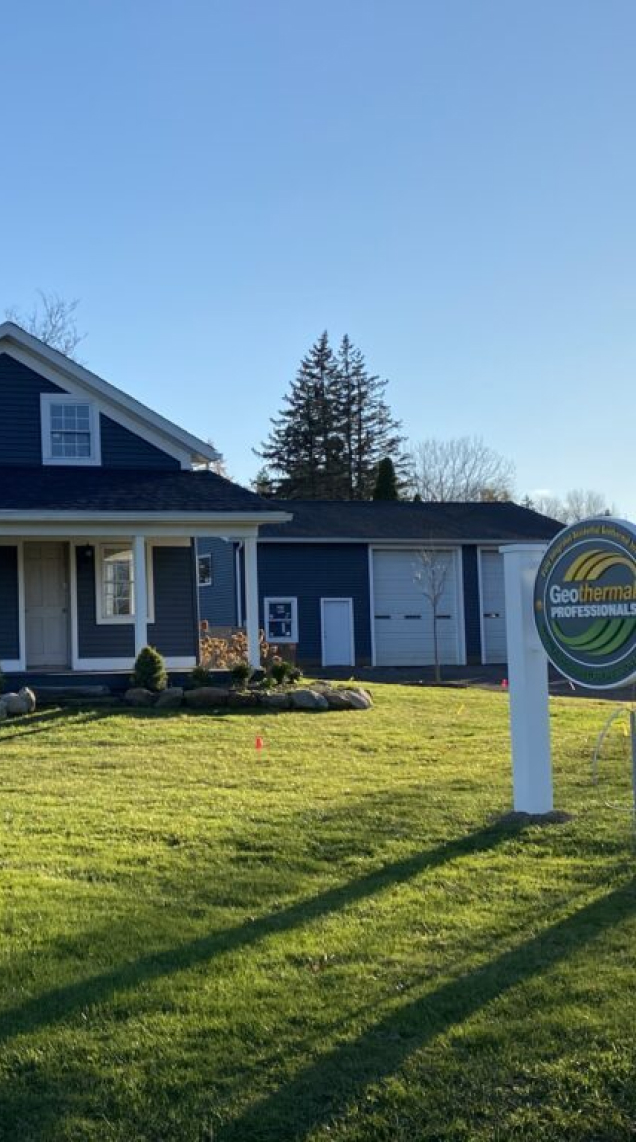
Maintenance Visits Include:
-
Filter Change
-
Heat Exchanger Cleaned and Checked
-
Condensate Pan Anti-Bacterial Treatment
-
Loop System Pressure Check
- System Flow Rate Check
-
Air Temperature Check
-
System Calibration & Balancing
-
Voltage & Amperage
-
Low Voltage Controls
-
Emergency Heat Operation
-
Refrigeration
Service Calls: $180 trip charge. $90.00 per labor hour
- Honeywell Prestige Thermostat
- Aprilaire 700 Humification system
- Aprilaire 800 Humification System
- Outdoor Sensor Battery Replacement
- AO Smith 50 Gallon Hot Water Tank
- Sentry Valve Replacement
- Board Replacement
- Refrigeration
- Capacitors & Contactors
- Honeywell Prestige Outdoor Sensor
- TXV Replacement
- Air Coil Replacement
- Spot Braze
- Air Coil Cleaning
- Geothermal System Inspection
What Is Geothermal Energy?
Renewable Energy You Already Own. And It’s Right In Your Backyard.
First
What Is Geothermal Energy?
Geothermal Energy simply uses the earth as a heat exchanger to provide heating and cooling for your home year round. Depending on the location, the underground temperature remains between 50ºF – 55ºF. Geothermal Energy systems use the steady temperatures to pre warm refrigeration in the winter and pre cool refrigeration in the Summer.
SEcond
How Does Geothermal Work?
The earth serves as a heat exchanger to pre-warm or pre-cool refrigeration. The refrigeration is compressed for heat and decompressed for A/C. In the compressed state, liquid refrigeration reaches temperatures near 135 degrees F and travel through a large coil in the ductwork. The air moves over the coil producing discharge air temperatures at or above 100 degrees F. In the A/C mode, the refrigeration travels through the same coil with a temperature near 34 degrees F. The Summer time discharge air temperatures are dry and cool.
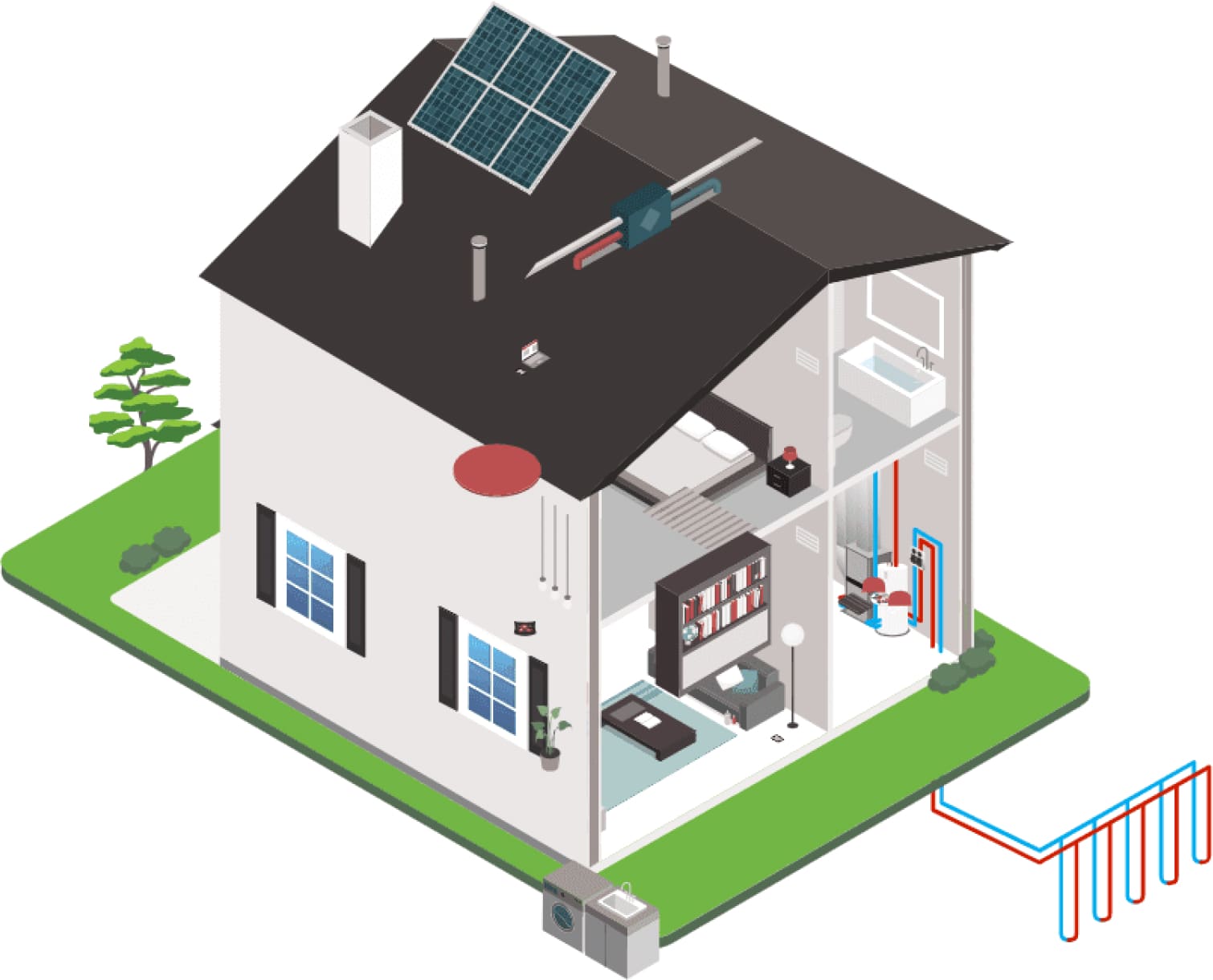
Photo courtesy of Hydron Module Geothermal Systems
Geothermal Cooling
In the summer the geothermal system reverses the cycle to provide air conditioning for your home. It does this by removing heat and humidity from inside your home and deposits it back underground.
Geothermal Heating
To heat your home, geothermal systems capture heat from the earth through a closed loop water system that is pipe through your backyard. The heat is then transferred from the water to a closed loop refrigeration system located inside your basement. The geothermal system concentrates the heat by means of a compressor and circulates the warm refrigeration through a heat exchanger. This heat exchanger can warm air to 100 degrees F and water to 130 degrees F.
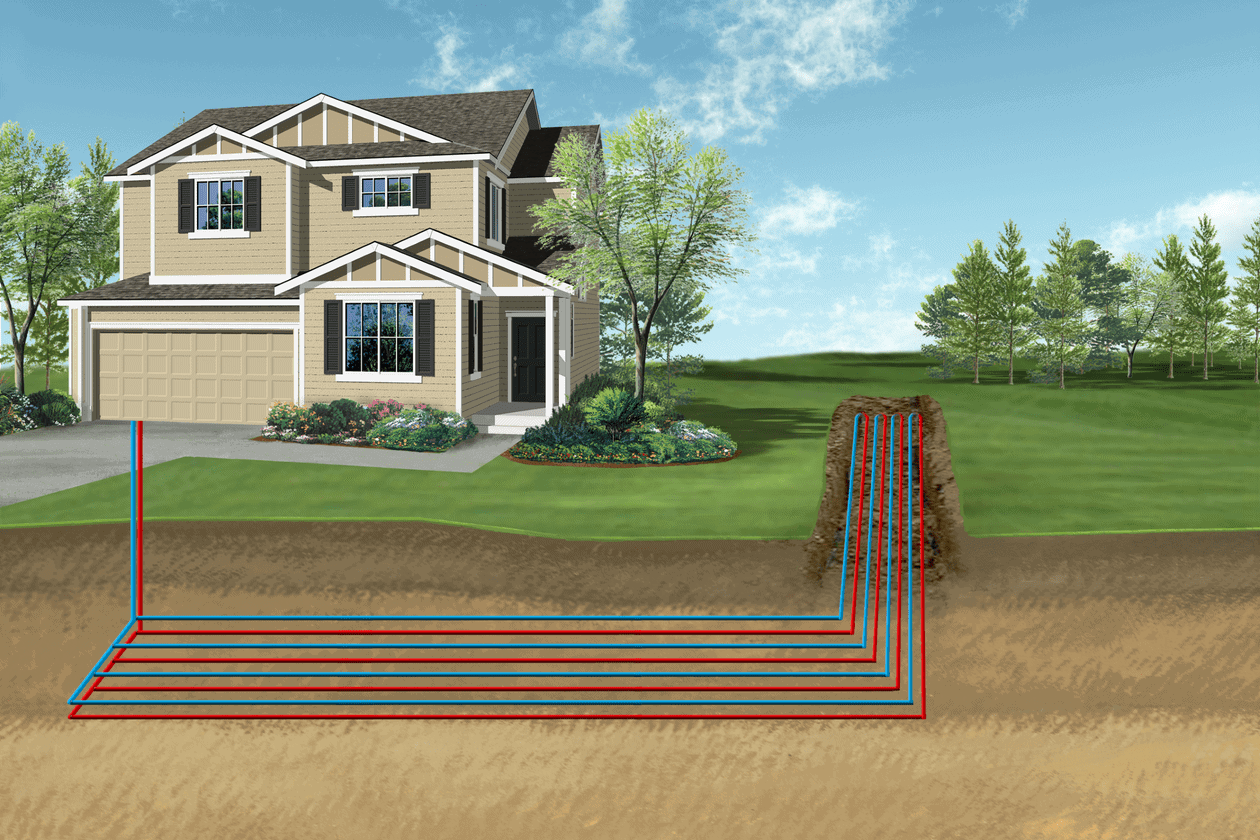
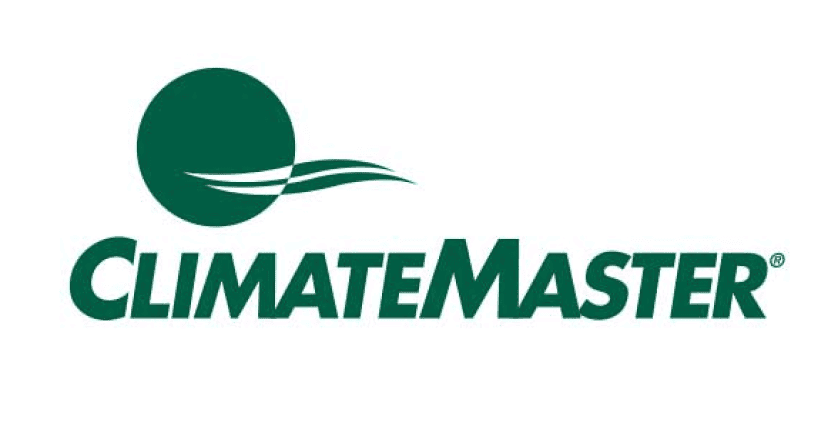
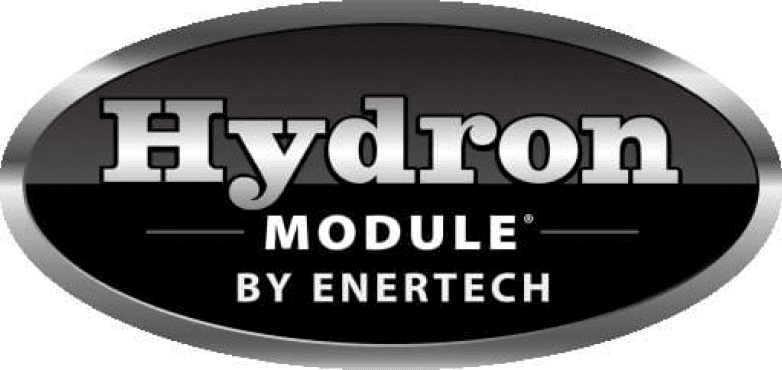
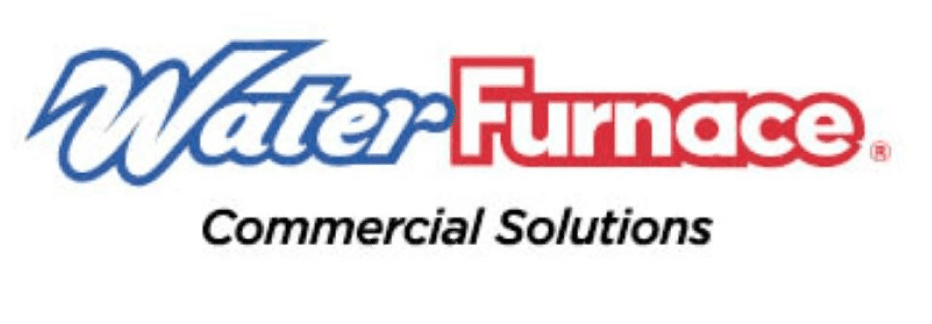
We Carry Climate Master Products / Hydron Module Products / Water Furnace

FAQ
FREQUENTLY ASKED QUESTIONS
The best American made geothermal system today is the Hydron Module Revolution2 – YT series. This particular system is hand built in Mitchell South Dakota and is designed to survive the winter temperatures in Canada, Upper Peninsula Michigan, Minnesota, Wisconsin and the Dakota’s. The Hydron Module is the only system that comes standard with an all aluminum micro-channel evaporator coil and integrated top side high and low voltage inputs. This is absolutely the finest and most durable geothermal system we have seen and installed.
Assuming that you have ductwork, on average you can expect to pay $30,000-35,000 for a complete installation which includes a high quality geothermal unit, high voltage wiring, controls and control wiring, transition fittings, drilling, piping, pumps, tie-in, flush, fill and calibration. If your house is on a boiler system and does not have pre-existing ductwork, you can expect to pay approximately $15,000 more for complete ducting. The actual cost will be determined by the size and configuration of your home.
For new residential construction, you can expect to pay $48,000 for a complete installation. This cost includes a high quality geothermal unit, high voltage wiring, controls and control wiring, ductwork with transition fittings, drilling, piping, pumps, tie-in, flush, fill and calibration.
A properly drilled loop field will last 100’s of years and a high quality geothermal unit should last 30 to 40 years.
A ground source heat pump (GSHP) and a geothermal heating and cooling system are actually the same thing. Geothermal systems are also referred to as ground source heat pumps because they use ground source energy to heat and cool homes.
The three main parts consist of a geothermal unit, an underground piping system (open or closed loop) and ductwork.
While outdoor temperatures fluctuate with changing seasons, underground temperatures don’t. Eight feet below the earth’s surface, temperatures remain relatively constant, and a geothermal system capitalizes on these temperatures to provide energy. In winter, a series of fluid-filled underground pipes called a “loop” absorbs stored heat, which is transferred indoors. An indoor pump compresses the heat to a higher temperature and distributes it throughout your home. In summer, the system reverses, pulling heat from your home, carrying it through the earth loop and depositing it into the cooler earth.
Unlike ordinary systems, geothermal systems do not use fossil fuels to generate heat. They simply transfer heat to and from the earth to provide a more efficient, affordable and environmentally friendly method of heating and cooling. Typically, only a small amount of electricity is used to operate the unit’s fan, compressor and pump.
Anywhere. Literally. Geothermal systems can be installed in the city, suburbs or rural areas; anywhere between the mountains and the Caribbean; in old or new homes and buildings; and in small or large structures. We’ve even seen geothermal used frequently to regulate greenhouses. There’s no structure geothermal can’t heat and/or cool.
Compared to the most efficient traditional system, a geothermal system is over five times more efficient in heating and more than twice as efficient in cooling. Because geothermal systems move existing heat rather than creating it through combustion, they provide four to five units of energy for every one unit used to power the system.
No. Geothermal systems are practically maintenance free. The buried loop will last for generations. The unit’s fan, compressor and pump is housed indoors, protected from the weather and contamination. Usually, periodic checks and filter changes are the only required maintenance.
Geothermal does play nice with solar power, and in combination, the two systems will help you be even less dependent on fossil fuels. Installing a geothermal system first allows you to use less solar energy.
To put your Geothermal System into Emergency heat/ Auxillary heat go to your Honeywell Prestige thermostat and hit the systems tab. From there you need to scroll all the way to the bottom. There you will see an option for Emergency or Auxillary heat, click on that and hit done.
The outdoor sensor batteries require lithium batteries.
